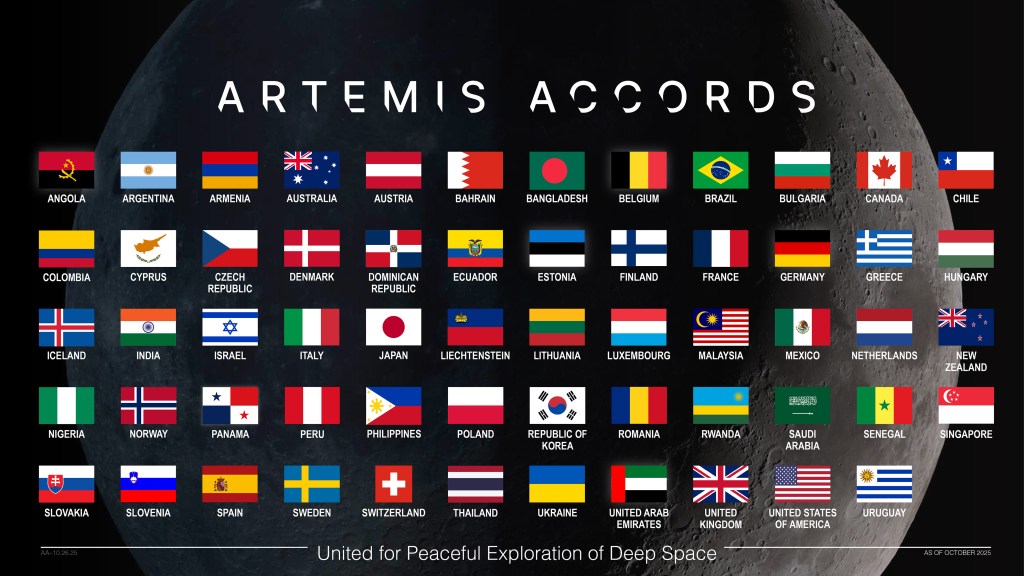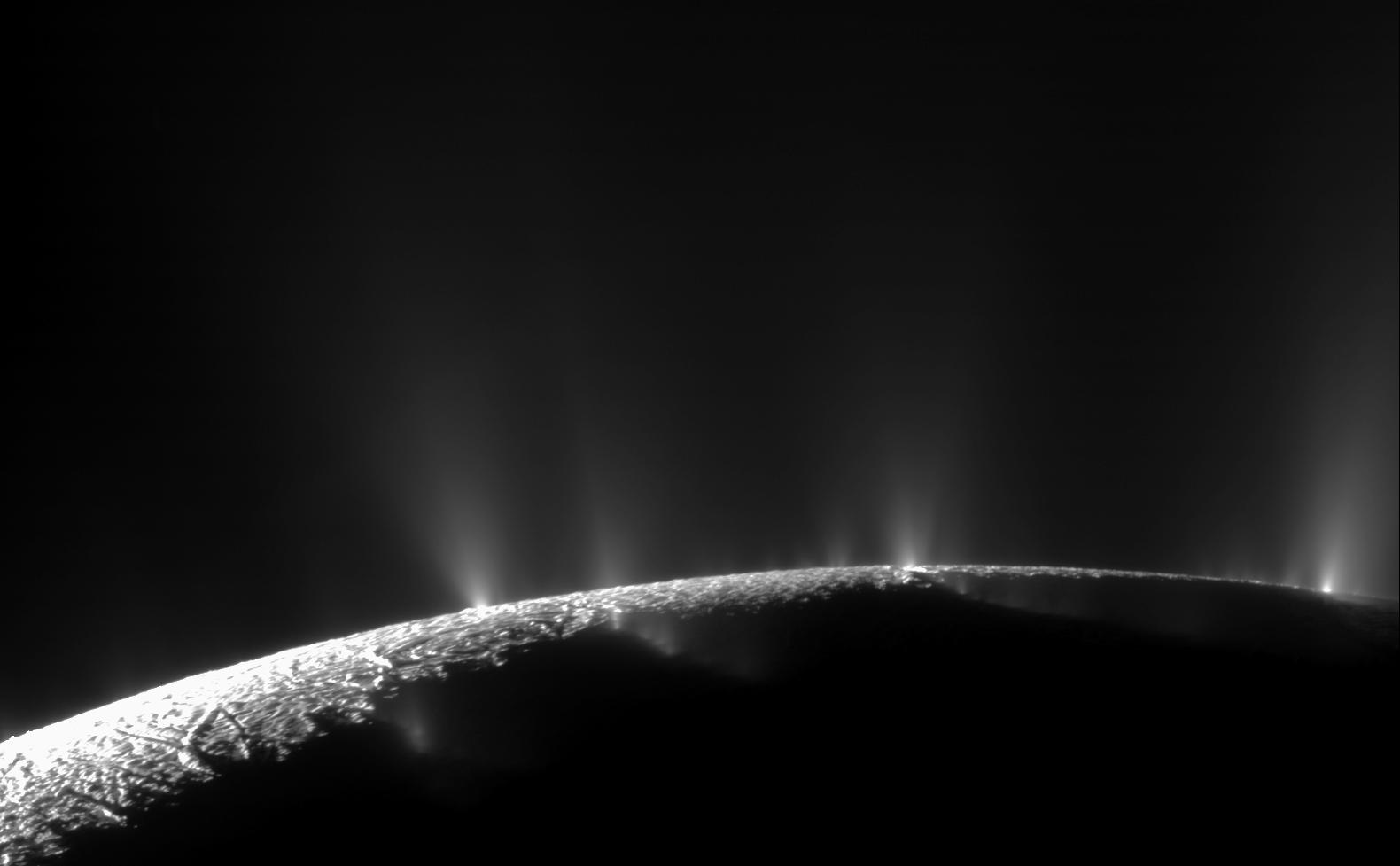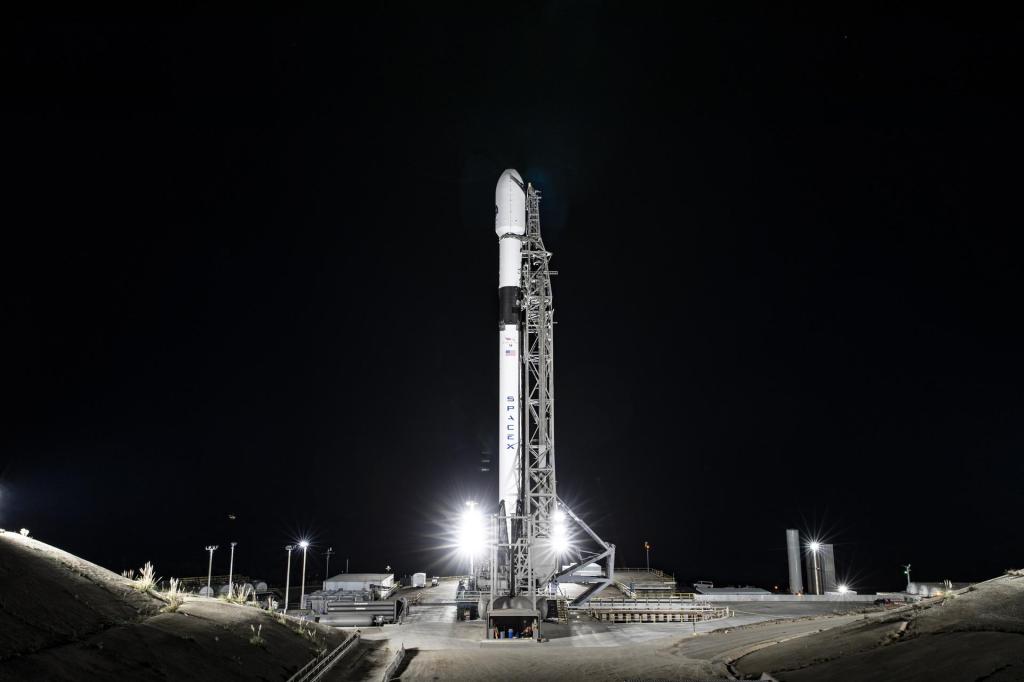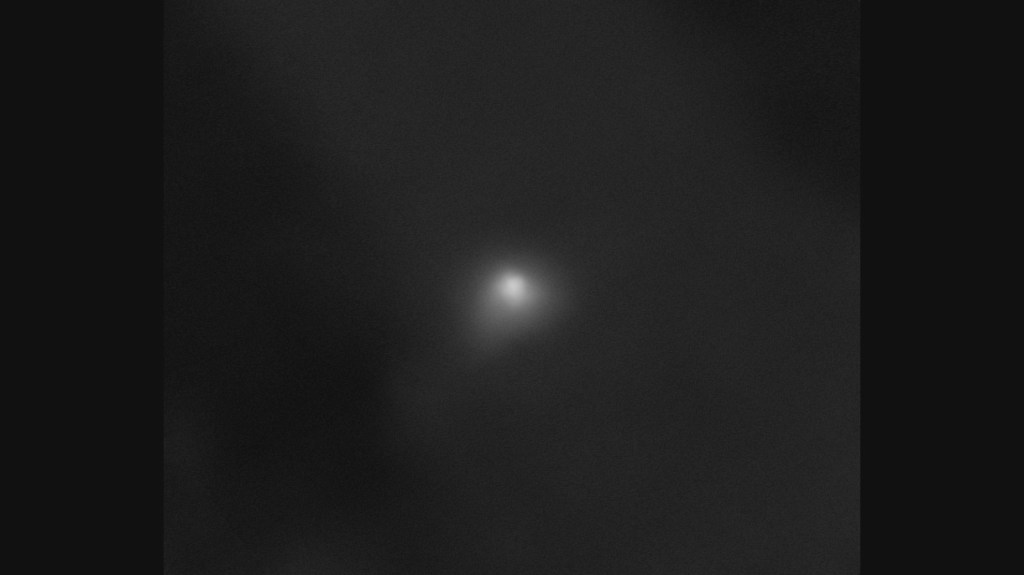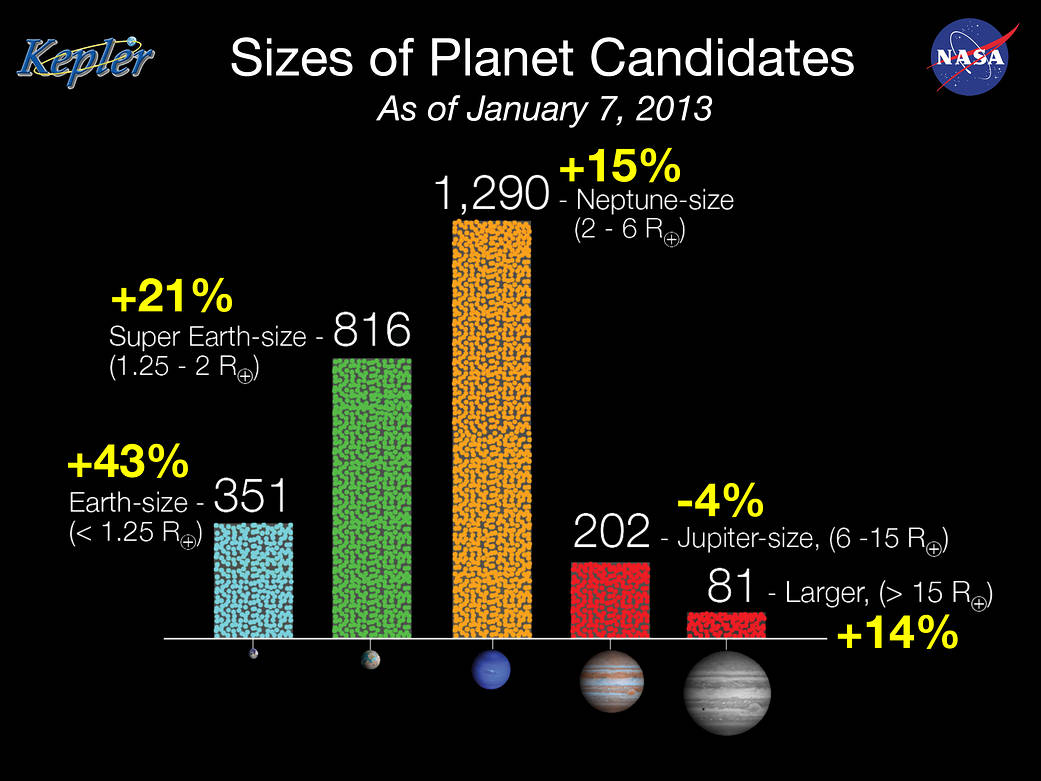
Since the last Kepler catalog was released in February 2012, the number of candidates discovered in the Kepler data has increased by 20 percent and now totals 2,740 potential planets orbiting 2,036 stars. Based on observations conducted May 2009 to March 2011, the most dramatic increases are seen in the number of Earth-size and super Earth-size can
Since the last Kepler catalog was released in February 2012, the number of candidates discovered in the Kepler data has increased by 20 percent and now totals 2,740 potential planets orbiting 2,036 stars. Based on observations conducted May 2009 to March 2011, the most dramatic increases are seen in the number of Earth-size and super Earth-size candidates discovered, which grew by 43 and 21 percent respectively.
Scientists analyzed more than 13,000 transit-like signals called ‘threshold crossing events’ to eliminate known spacecraft instrumentation and astrophysical false positives, phenomena that masquerade as planetary candidates, to identify the potential new planets.
Image credit: NASA Ames/W Stenzel


